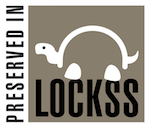A teratologic case in Eucaliga sanguinicollis Fairmaire & Germain, 1861 (Coleoptera: Tenebrionidae: Alleculinae)
Abstract
A teratologic case is described in a female of the beetle species Eucaliga sanguinicollis Fairmaire & Germain, 1861 (Coleoptera: Tenebrionidae: Alleculinae) collected in the Malleco Province, Chile (37°49’40” S; 73°00’35” W). The specimen exhibits meiomelia in both antennae, characterized by the lack of three and one antennomeres in the right and left antennae, respectively. The possible causes of the origin of these malformations are discussed.References
Balazuc, J. 1948. La Tératologie dês Coléoptères et expériences de transplantation chez Tenebrio molitor L. Mémoires Du Muséum National d’Histoire Naturelle, (Nouvelle série), Paris 25: 1-293.
Balazuc, J. 1969. Supplément à la tératologie des coléoptères. Redia 51: 39-111.
Campbell, J.M. 1975. A revision of the Alleculidae (Coleoptera) of Chile. Revista Chilena de Entomología 9: 13-39.
Castro Tovar, A., Baena, M., López Vergara, M.A. 2014. Nuevos casos de teratologías en Coleoptera (Insecta) Zoologica baetica 25: 3-12.
Dallas, E.D. 1926. Anomalías en coleópteros chilenos. Revista Chilena de Historia Natural 30: 73-83.
Gajardo, R. 1994. La vegetación natural de Chile. Clasificación y distribuciones geográficas. Editorial Universitaria, Santiago, Chile.
Ortuño, V.M. 2000. Malformaciones en los coleópteros. Investigación y Ciencia, Noviembre 2000: 40-41.
Ortuño, V.M., Ramos Abuín, J.A. 2008. Reflexiones sobre la teratología y descripción de cuatro teratosis apendiculares en Coleoptera. Boletín de la Sociedad Entomológica Aragonesa 43: 435-439.
Ortuño, V.M., Vique, I.M. 2007. Descripción de algunos carábidos teratomorfos (Coleoptera: Adephaga: Carabidae). Boletín de la Sociedad Entomológica Aragonesa 40: 463-469.
Pérez D’Angello, V. 1967. Contribución a la entomoteratología. Noticiario Mensual del Museo Natural de Historia Natural 11: 4.
Vidal, P., Guererro, M. 2007. Los tenebriónidos de Chile. Ediciones Universidad Católica de Chile. Santiago, Chile.
Balazuc, J. 1969. Supplément à la tératologie des coléoptères. Redia 51: 39-111.
Campbell, J.M. 1975. A revision of the Alleculidae (Coleoptera) of Chile. Revista Chilena de Entomología 9: 13-39.
Castro Tovar, A., Baena, M., López Vergara, M.A. 2014. Nuevos casos de teratologías en Coleoptera (Insecta) Zoologica baetica 25: 3-12.
Dallas, E.D. 1926. Anomalías en coleópteros chilenos. Revista Chilena de Historia Natural 30: 73-83.
Gajardo, R. 1994. La vegetación natural de Chile. Clasificación y distribuciones geográficas. Editorial Universitaria, Santiago, Chile.
Ortuño, V.M. 2000. Malformaciones en los coleópteros. Investigación y Ciencia, Noviembre 2000: 40-41.
Ortuño, V.M., Ramos Abuín, J.A. 2008. Reflexiones sobre la teratología y descripción de cuatro teratosis apendiculares en Coleoptera. Boletín de la Sociedad Entomológica Aragonesa 43: 435-439.
Ortuño, V.M., Vique, I.M. 2007. Descripción de algunos carábidos teratomorfos (Coleoptera: Adephaga: Carabidae). Boletín de la Sociedad Entomológica Aragonesa 40: 463-469.
Pérez D’Angello, V. 1967. Contribución a la entomoteratología. Noticiario Mensual del Museo Natural de Historia Natural 11: 4.
Vidal, P., Guererro, M. 2007. Los tenebriónidos de Chile. Ediciones Universidad Católica de Chile. Santiago, Chile.
Published
2015-08-01
How to Cite
(1)
Lüer, A. A Teratologic Case in Eucaliga Sanguinicollis Fairmaire & Germain, 1861 (Coleoptera: Tenebrionidae: Alleculinae). BNH 2015, 1, 41-43.
Issue
Section
Short Communications
Copyright (c) 2015 Biodiversity and Natural History

This work is licensed under a Creative Commons Attribution-NonCommercial 4.0 International License.
Authors who publish with this journal agree to the following terms:
- Authors retain copyright and grant the journal right of first publication.
- The articles in this journal are published under Creative Commons Attribution-NonCommercial 4.0 International License that allows others to share the work with an acknowledgement of the work's authorship and initial publication in this journal.
- Authors are permitted and encouraged to post their work online (e.g., in institutional repositories, on their website or ResearchGate) prior to and during the submission process, as it can lead to productive exchanges, as well as earlier and greater citation of published work (SeeThe Effect of Open Access).










